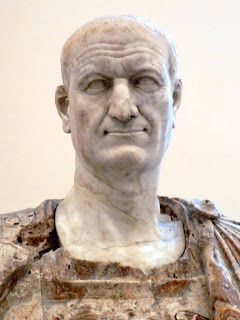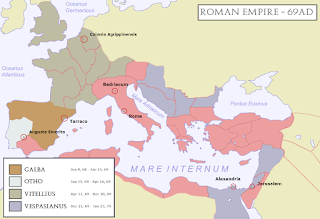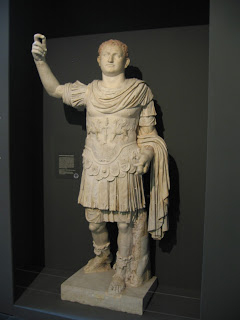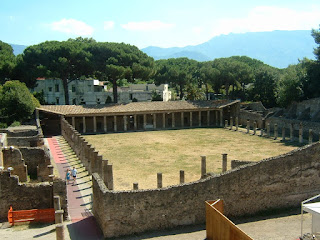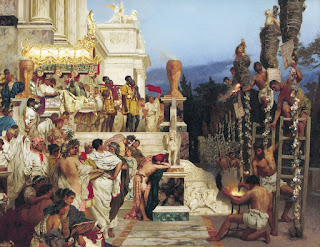Pontiff who cleaned up and rebuilt Rome and reformed church
 |
| Pope Sixtus V introduced a programme of measures to tackle Rome's problems |
Succeeding Pope Gregory XIII in 1585, Sixtus V inherited an administration that was riddled with corruption and a city of Rome that to a large extent fallen into the hands of thieves and criminal gangs.
He responded with a series of measures that brought about profound change with far-reaching consequences for the city and the wider country, making his mark on a scale that few pontiffs had matched before or since.
As well as tackling crime with brutal ruthlessness, he introduced significant reforms in the administration of the Catholic Church and commissioned lavish building projects that changed Rome from a medieval city to a one of Baroque grandeur.
The son of a poor farm hand in Grottammare, the future pope entered a monastery when he was nine years old and joined the Order of Friars Minor three years later. His familiarity with adversity made him resourceful and strong.
After being ordained, he impressed many with his preaching and was a popular choice as pope, attaining office at the age of 64 following Gregory XIII’s death.
 |
| Pope Gregory XIII left Rome's finances in a parlous state, while crime gripped the city |
The brigands and criminal gangs who held the city in their grip were his first targets, and he used the full strength of his papal forces to crush them, beginning a clampdown that would eventually see as many as 27,000 criminals and their mob bosses rounded up an executed.
As a deterrent to others, Sixtus V would regularly have the heads of executed brigands placed on top of stakes around the city.
The result was that within two years Rome was the safest city in Europe, the countryside was free of bandits and the economy prospered.
Sixtus tackled his reforms of the central administration of the church with similar zeal. By a papal bull - edict - issued in 1586, he redefined the Sacred College of Cardinals by setting the number of cardinals at no more than 70, a limit that stayed in place until the pontificate of John XXIII (1958–63).
In 1588 he overhauled the Curia - the government of the Catholic Church - in its entirety, establishing 15 congregations - departments - in a structure that also remained substantially unchanged until the 1960s.
| Pope Sixtus V had an estimated 27,000 criminals put to death in a ruthless purge |
Sixtus V was determined to refill the treasury, although he could hardly be accused of sitting on the new wealth he created.
Turning his attention to the urban plan of Rome, he ordered the creation of broad new streets that were the beginnings of how the map of the city looks today. The Porta del Popolo, where he placed an obelisk in the piazza, the Via Sistina and Via delle Quattro Fontane all owe their existence to Sixtus V.
The Cupola of St. Peter’s Basilica was completed after he ordered the architect Giacomo della Porta to finish what had been a ten-year plan of works inside 24 months. Sixtus V also built the loggia of Sixtus in the Basilica di San Giovanni in Laterano and the chapel of the Praesepe in Santa Maria Maggiore, as well as commissioning repairs to the Quirinal, Lateran and Vatican palaces.
He restored Rome’s four Egyptian obelisks, including that in St Peter's Square.
Sixtus V restored the aqueduct of Septimus Severus - called the Acqua Felice after his baptismal name - in addition to the Acqua Vergine, which flows into the Trevi Fountain, with the purpose of bringing clean water into a less inhabited area and encouraging people to live there. The Palazzo Barberini and the Triton fountain were later made possible thanks to Sixtus V’s aqueduct.
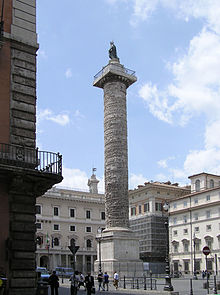 |
| Sixtus V placed a statue of St Paul atop the Column of Marcus Aurelius, built in 193AD |
In his foreign policies, Sixtus V proposed the conquest of Egypt and supported King Philip II of Spain in his planned invasion of England, with ambitions to excommunicate Elizabeth I, although in the event none of those things happened.
Sixtus V died on August 27, 1590, the last pope to have used the name Sixtus. He was disliked by many of his subjects but history has recognized him as a significant figure in the Counter Reformation, and a pope who took on great enterprises and made significant achievements. He also left five million crowns in the coffers of what had been a bankrupt treasury.
 |
| The remains of the 16th century fortress stand over the coastal resort of Grottammare, where Pope Sixtus V was born |
Grottammare is one of the beach resorts that make up the Marche region’s Riviera delle Palme, a stretch of coastline around the larger town of San Benedetto del Tronto. It is notable for a fine, sandy beach but also for the well preserved remains of a fortress overlooking the town that was built following the sacking of Grottammare by the Montenegran Princes of Dulcigno in 1525. The centre of the older part of the town is Piazza Peretti, a square enclosed by the Church of San Giovanni Battista, the Town Hall, Municipal Tower and Teatro dell'Arancio. Grottammare takes pleasure in celebrating its geographical position on the 43º parallel, the line of latitude that also passes through the cities of Assisi (Italy), Santiago de Compostela (Spain), Lourdes (France), Medjugorje (Bosnia), Vladivostok (Russia), Sapporo (Japan), Buffalo and Milwaukee (United States).
| The Fountain of Moses at the end of the Aqua Felice aqueduct into Rome |
The Aqua Felice was the first aqueduct built during the Roman Renaissance, more than 1,000 years after the ancient aqueducts in Rome had been cut by invading Goths. Sixtus V commissioned his favourite architect, Domenico Fontana, who came up with the Fountain of Moses which also serves as the terminus of the Aqua Felice. Although the fountain, sometimes known as ‘Fat Moses’, has never been particularly well-liked, it is seen as representative of the great urban renewal that took place in Rome during the Renaissance, particularly under Sixtus V.
More reading:
Urban VIII, the pope whose extravagance led to disgrace
Pius V, the pope for excommunicated Queen Elizabeth I of England for heresy
The kidnapping of Pope Boniface VIII
Also on this day:
The Festa di Santa Lucia
1466: The death of Renaissance sculptor Donatello
1720: The birth of playwright Carlo Gozzi
Home
